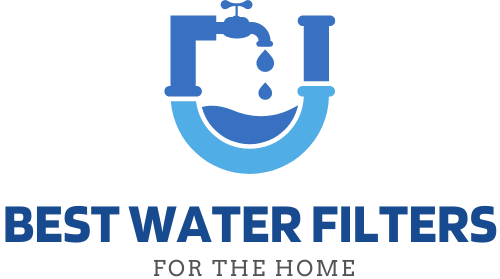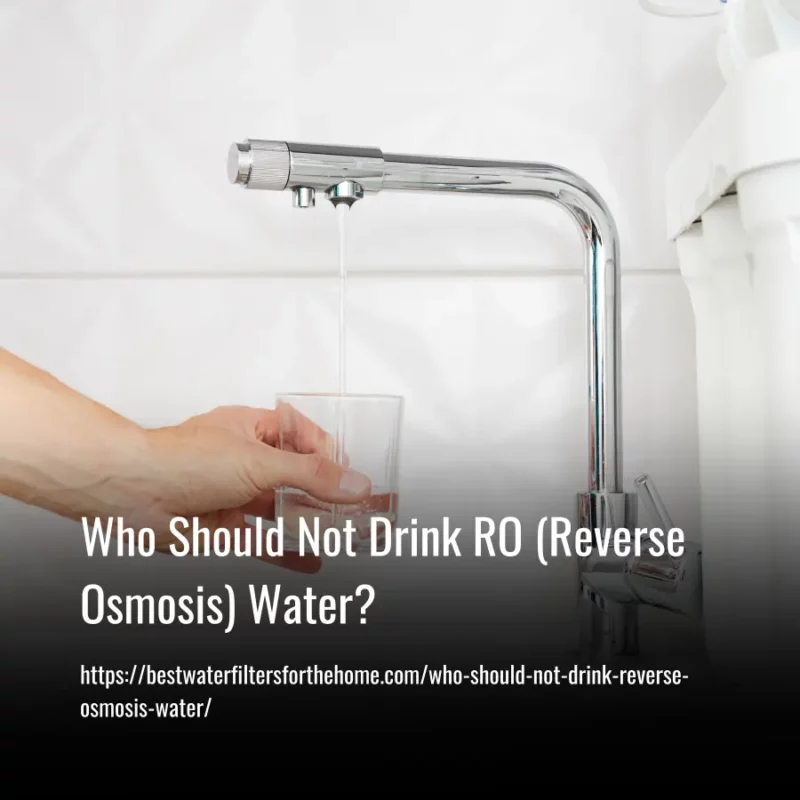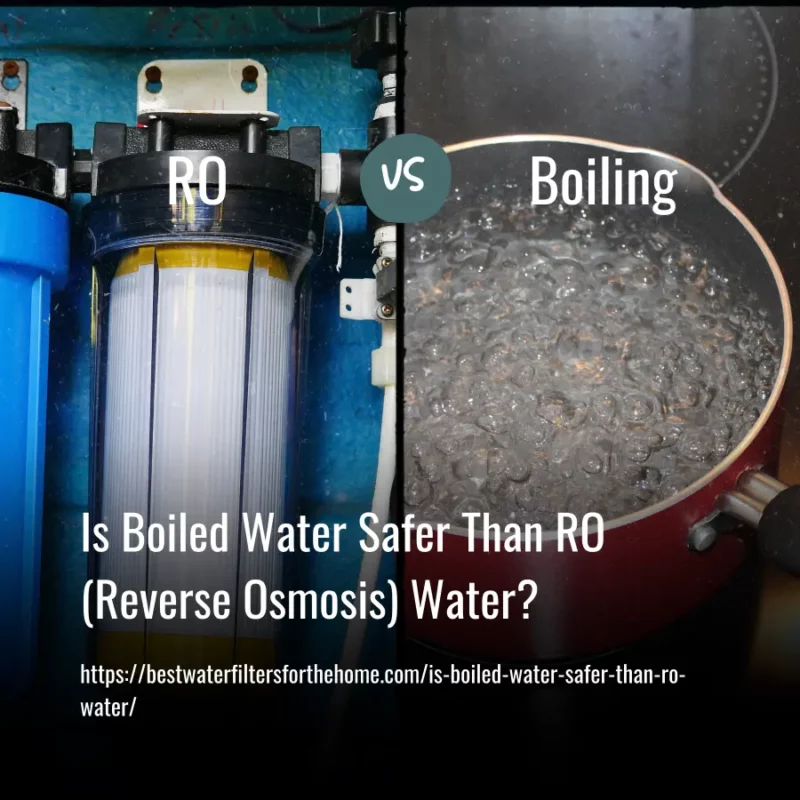This post contains affiliate links. As an Amazon Associate, we earn from qualifying purchases.
Water filtration systems are becoming increasingly popular as consumers realize just how important clean water is to our health.
Reverse osmosis is one of the most effective water filters available. However, reverse osmosis has its drawbacks. In this article, I’ll go over the pros and cons of reverse osmosis so you can make an informed decision about whether or not it’s right for you.
I’ll also tell you why I recommend reverse osmosis over other types of water filtration systems.

What is Reverse Osmosis?
Reverse osmosis is a process by which water passes through a membrane filter, leaving behind impurities such as salt, minerals, and bacteria. It’s commonly used to purify drinking water, but it can also be used to clean wastewater.
In this case, reverse osmosis is used to remove contaminants from wastewater.
How Does Reverse Osmosis Water Filtration Work?
This method of filtration requires a lot of pressure, so if you live somewhere where there isn’t enough pressure available, you may need to install a booster pump. But if you live in a place where there is plenty of pressure, you won’t need any additional equipment.
As an example, for brash water (water with more saltiness than fresh water, but less saltiness than seawater), the water pressure flowing though your reverse osmosis systems will be between 225 and 375 psi. That’s more than six times the average water pressure to your house (usually between 40 to 50 psi). This intense pressure forces water through the semi-permeable membranes, leaving impurities behind.
What Are The Pros And Cons Of Reverse Osmosis?
Reverse osmosis is a great way to purify drinking water. But there are pros and cons to using it. Here are some of the benefits and drawbacks of reverse osmosis.
Advantages:
• It is the best method of water softening.
• The semi-permeable membrane blocks all ions.
• The maintenance of the system isn’t difficult.
• It provides clean and pure water by filtering out all impurities.
• It doesn’t require any chemical treatment to purify water.
• It saves time and money.
• It is suitable for households.
• It is totally automatic.
• The energy consumption is very low.
Disadvantages:
• Sometimes reverse osmosis causes clogging of the whole unit.
• It requires regular filter replacements and maintenance.
• Installation costs are high.
• There are chances that the membrane gets damaged due to excessive use.
• It takes a long time to get purified water.
• It does not provide 100% pure water.
• It is expensive.
Learn more disadvantages of reverse osmosis filtration system here.
Is it healthy to drink reverse osmosis water?
RO water is safe to drink, and it tastes great! It’s also much healthier than tap water since it doesn’t contain any harmful chemicals. However, there are some things to consider when choosing a system.
- First, you should look for a high-quality product that meets NSF standards.
- Second, you should choose a model that includes a carbon filter, which removes impurities from the water.
- Third, you should ensure that the unit is installed correctly by a professional plumber.
- Finally, you should always test the water before drinking it.
What Are The Side Effects Of Drinking Ro Water?
RO water is great for cleaning dishes and clothes, but it doesn’t do anything for your health. You should never drink it if you’re trying to lose weight or keep healthy.
In recent years, there have been numerous reports of serious health problems associated with drinking RO water. Some of those include high blood pressure, stomach ulcers, kidney stones, and even cancer.
According to the World Health Organization, using RO water for cooking causes significant losses of all essential elements. These losses may reach up to sixty percent for magnesium and calcium or more for some other microelements, such as copper, manganese, cobalt, and zinc.
When used for cooking, RO water was found to cause substantial losses for all essential elements from food. Such losses may reach up to sixty percent for magnesium and calcium or even more for some of the other microelements, such as copper, manganese, cobalt, and zinc.
The addition of minerals to remineralize the RO water will not b optimal. According to the World Health Organisation, the practice of adding minerals into the reverse osmotic water cannot be considered optimum, since the water does not contain all its beneficial components.
In fact, the addition of minerals into the reverse osmotic water may lead to the development of deficiencies of certain elements.
For example, according to WHO recommendations, the daily intake of calcium must be between 800 mg and 1 g per day.
However, the average daily consumption of calcium in the United States is only 400 mg.
Is It Better To Drink Tap Water Or Reverse Osmosis Water?
Drinking reverse osmotic water can cause serious health issues, according to the World Health Organization.
It has been scientifically proven that drinking reverse osmotic water causes more damage to the body than most contaminants in tap water.
How Do You Get Minerals If You Drink Ro Water?
If you prefer to drink RO water, then you may want to consider getting minerals added to it. You can add minerals to your water by either adding drops or Himalayan sea salt.
A Himalayan sea salt is a natural form of magnesium chloride that comes from the mountains of Nepal. It’s rich in calcium, potassium, sodium, iron, zinc, copper, manganese, molybdenum, bromide, iodine, selenium, silica, phosphorous, and sulfur.
Adding drops of minerals to your water isn’t recommended unless you know how to properly measure them. Adding too little or too much of any mineral can cause health problems.
Instead, try adding Himalayan sea salt to your water instead. It’s a natural source of minerals that won’t harm your body. Plus, it tastes great!
FAQs:
Can RO water cause stomach problems?
RO water is great for drinking, cooking, and cleaning. But did you know that it can also cause stomach problems? According to the World Health Organization, prolonged use of RO water can lead to chronic gastritis, gastroduodenal ulcers, indigestion, stomach ache, and vomiting.
So if you’re using RO water regularly, you should probably stop doing so. You might also want to consider switching to bottled or filtered water instead.
How long can you drink reverse osmosis water?
Reverse osmosis is a great option for drinking water, but it doesn’t last forever. You can only drink reverse osmosis filtered water for up to two weeks before it needs to be replaced.
Is RO drinking water good or bad for health?
Purified(RO) water is healthier than regular tap water because it contains fewer contaminants. It helps protect against disease, boosts your immune system, and makes you feel better when you’re thirsty.
Conclusion:
Reverse osmosis has become increasingly popular among homeowners who wish to save water while still maintaining high-quality drinking water. It works by filtering out contaminants such as bacteria, viruses, heavy metals, and even chlorine.
However, reverse osmosis systems aren’t without drawbacks. They require regular maintenance and replacement filters, and they can cost thousands of dollars. So what are the pros and cons of reverse osmosis?
Let’s look at both sides of the coin.



